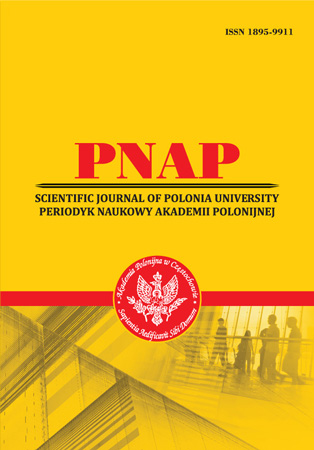MEMORY AND SPACE IN KAZUO ISHIGURO'S NOVEL "THE BURIED GIANT": INTERMEDIAL ASPECT
Abstract
The aim of the article is to investigate the phenomenon of intermediality in 2015 novel The Buried Giant by the British writer Kazuo Ishiguro. Particular attention is paid to the notion of “literary cinematographicness” (also known as cinematic or filmic mode), which is defined as the use of cinematic techniques and effects in literature, thus creating the effect of multimodality, with a dramatic-intensive flow of events in the text. Analyzing examples from Ishiguro’s novel, the article focuses on such elements of literary cinematographicness as the prevalent audio-visual modality, with an in-depth semantics of sensory images and characters’ non-verbal language; the abundance of audial and visual special effects; as well as incorporating different shots sizes, perspectives, and angles that produce the effect of multidimensional space in the recipient’s mind. Furthermore, the novel’s central motif of memory and recollections determines its non-linear chronotope, with such cinematic techniques as montage, dynamic frame shots, and flashbacks becoming instrumental in depicting the complex spatio-temporal relations between the scattered scenes and images.
References
2. Bakhtin, M. M. (2010). The dialogic imagination: Four essays (Vol. 1). Ostin, TE: University of Texas Press.
3. Bellardi, M. (2018). The cinematic mode in twentieth-century fiction a comparative approach (Doctoral dissertation). Birmingham: University of Birmingham.
4. Borowska-Szerszun, S. (2016). The giants beneath: Cultural memory and literature in Kazuo Ishiguro’s The Buried Giant. CROSSROADS. A Journal of English Studies, 04(15), 30-41.
5. Fesenko, V. I. (2014). Literatura i zhyvopys: Intermedial`nyj dyskurs: Navch. posibnyk [Literature and painting: Intermediate discourse: A textbook]. Kyiv: Vyd. Centr KNLU. [in Ukrainian].
6. Ishiguro, K. (2015). The buried giant. New York, NY: Alfred A. Knopf.
7. Kellman, S. G. (1987). The cinematic novel: Tracking a concept. Modern Fiction Studies, 33(3), 467-477.
8. Lannom, S.C. (2020). Guide to camera shots: Every shot size explained. Retrieved from https://www.studiobinder.com/blog/types-of-camera-shots-sizes-in-film/#tve-jump-16d4d185912.
9. Linkis, S. T. (2019). Memory, intermediality, and literature: Something to hold on to. London: Routledge.
10. Lotman, Y. M. (1973). Semiotika kino i problemy kinoestetiki [Semiotics of the film and the problem of cinema esthetics]. Tallinn: Eesti Raamat. [in Russian].
11. Luk'yanets, T. (2017a). Elementy kinopoetyky v hudozhn`omu teksti: Dosvid adaptaciyi kinematografichnyh pryjomiv v anglomovnij hudozhnij prozi XX–XXI stolit` [The elements of cinema poetics in fiction: The experience of adapting cinematographic techniques in English prose of the XX–XXI centuries]. Naukovi Zapy`sky`, 153, 111-114. [in Ukrainian].
12. Luk'yanets, T. (2017b). Kinopryjomy` i kinotehniky v hudozhn`omu teksti: Semiotychne pidgruntya verbalnoyi transformaciyi [Cinematic techniques in a literary text: Semiotic basis of verbal transformation]. Visnyk Mariupol`s`kogo Derzhavnogo Gumanitarnogo Universytetu. Ser.: Filologiya, (17), 34-38. [in Ukrainian].
13. Martianova, I. A. (2002). Kinovek russkogo teksta: Paradoks literaturnoj kinematografichnosti [Cinema age of the Russian text: The paradox of literary cinematographicness]. Saint Petersburg: Saga. [in Russian].
14. Martianova, I. A. (2017). Kinematografichnost' sovremennogo teksta na materiale russkoj prozy [Cinematografy of literary text (on the material of the contemporary Russian prose]. Vestnik Chelyabinskogo Gosudarstvennogo Pedagogicheskogo Universiteta, 1, 136–141. [in Russian].
15. McLuhan, M. (1994). Understanding media: The extensions of man. Cambridge, MA: MIT Press.
16. Mihejkina, A. A. (2020). Koncept pamyati v romane Kazuo Ishiguro “Pogrebennyj Velikan” [The concept of memory in Kazuo Ishiguro’s novel “The Burried Giant”]. Uchenye Zapiski Novgorodskogo Gosudarstvennogo Universiteta, 4(29), 1-5. [in Russian].
17. Whitmore, H. (2017) Nobel Laureate Kazuo Ishiguro: The Kingdom of Memory. Retrieved from https://www.barnesandnoble.com/review/kazuo-ishiguro-the-kingdom-of-memory
Abstract views: 384 PDF Downloads: 311







